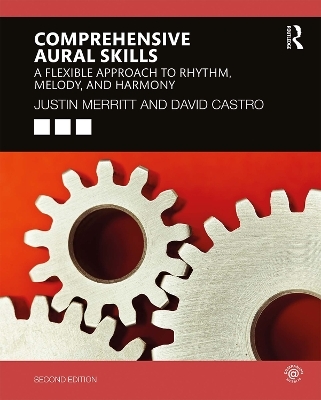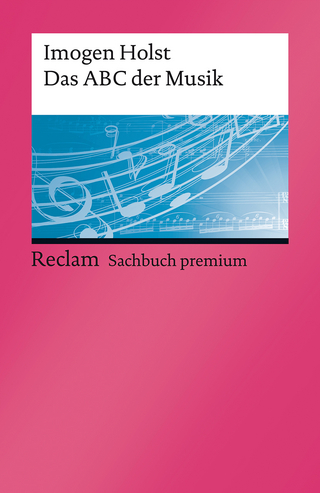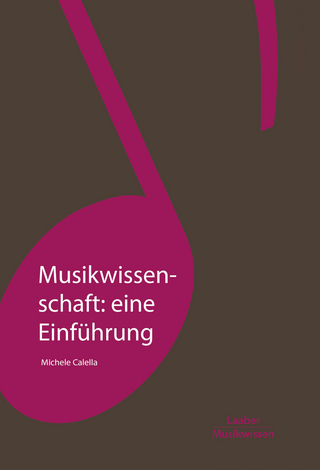
Comprehensive Aural Skills
Routledge (Verlag)
978-0-367-22594-0 (ISBN)
Comprehensive Aural Skills is a complete suite of material for both performance and dictation, covering the wide range of sight singing and ear training skills required for undergraduate courses of study. It provides a series of instructional modules on rhythm, melody, and harmony, and blends musical examples from the common-practice repertory with original examples composed to specifically address particular skills and concepts. Each module includes material for classroom performance, self-directed study, and homework assignments.
Features
A complete suite of aural skills material: Comprehensive Aural Skills is a combined sight singing and ear training textbook, audio, and companion website package.
Fully modular, customizable organization: Instructors can choose freely from the set of exercises in the book and supplemental material on the companion website to appropriately tailor the curriculum based on their students’ needs.
Engaging and idiomatic musical examples: Examples are selected and composed specifically for the didactic context of an aural skills classroom.
Dictation exercises for practice and assignment: Practice exercises include an answer key so students can work independently and receive immediate feedback, while homework assignments are given without a key.
Audio examples for dictation: The website hosts live recordings of acoustic instruments performed by professional musicians for each dictation exercise and homework assignment.
Supplemental materials for instructors: A wealth of material for class use and assignment can be found on the companion website.
Teachers’ guide: The guide includes answers for every homework assignment, brief commentary on each module’s content, tips for integrating written theory, and strategies on how to effectively teach new concepts and skills.
This updated second edition includes the following:
Revised rhythm and harmony module structure, now introducing foundational concepts more gradually.
Additional examples from the repertory in the harmony and melody modules.
New and improved recordings on the companion website.
Justin Merritt is Professor of Music Composition and Theory at St. Olaf College, USA. David Castro is Associate Professor of Music Theory at St. Olaf College, USA.
Part 1: Rhythm
Module 1 : Introduction to Simple Meters
Module 2 : Simple Meters, Continued
Module 3 : Rests and Ties
Module 4 : Syncopation in Simple Meters
Module 5 : Introduction to Compound Meters
Module 6 : Compound Meters, Continued
Module 7 : Syncopation in Compound Meters
Module 8 : Triplets, Duplets, and Hemiola
Module 9 : Compound Meters, Advanced Beat Patterns
Module 10 : Asymmetrical and Mixed Meters
Part 2: Melody
Module 1 : Steps within the Major Scale
Module 2 : Steps within the Minor Scale
Module 3 : Leaps within the Tonic Triad (Major and Minor)
Module 4 : Leaps within the Dominant (Seventh) and vii°
Module 5 : Further Diatonic Leaps
Module 6 : Stepwise Chromatic Tones
Module 7 : Motion to The Dominant
Module 8 : Leaps To and from Chromatic Tones
Module 9 : Modulation to Closely Related Keys
Module 10 : Advanced Chromaticism
Module 11 : Modulation to Distantly Related Keys
Module 12 : Pentatonic and Diatonic Modes
Module 13 : Other Modes
Module 14 : Sets and 12-Tone Rows
Part 3: Harmony
Module 1 : I(i) and V (^1 and ^5 in the Bass)
Module 2 : IV(iv), ii6(°6), and ii (^4 and ^2 in the Bass)
Module 3 : I(i)6, vii°6, and V6 (^3, ^2, and ^7 in the Bass)
Module 4 : V7 and the Cadential 6/4 (^5 in the Bass)
Module 5 : Inversions of V7 and The Passing 6/4 (^4, ^2, and ^7 in the Bass)
Module 6 : vii°7 and its Inversions and the Pedal 6/4
Module 7 : IV(iv)6, vi(VI), and iii(III) (^6, and ^3 in the Bass)
Module 8 : Pre-dominant Seventh Chords—ii(ø)7 and IV(iv)7
Module 9 : Applied Dominants 1—V7/V, vii°7/V, and V7/III
Module 10 : Applied Dominants 2—V7/IV(iv) and vii°7/iv
Module 11 : Applied Dominants 3—V7/ii, vii°7/ii, V7/vi(VI), and vii°7/vi
Module 12 : Modulation to Closely Related Keys
Module 13 : Modal Mixture
Module 14 : The Neapolitan (bII)
Module 15 : Augmented 6th Chords
Module 16 : Modulations Using vii°7 and the ct°7
Glossary of Musical Terms; Solmization Systems
Dicatation Keys
Part 1 Rhythm
Part 2 Melody
Part 3 Harmony
| Erscheinungsdatum | 23.03.2020 |
|---|---|
| Zusatzinfo | 2158 Line drawings, black and white; 2158 Illustrations, black and white |
| Verlagsort | London |
| Sprache | englisch |
| Maße | 203 x 254 mm |
| Gewicht | 840 g |
| Themenwelt | Kunst / Musik / Theater ► Musik ► Musiktheorie / Musiklehre |
| ISBN-10 | 0-367-22594-8 / 0367225948 |
| ISBN-13 | 978-0-367-22594-0 / 9780367225940 |
| Zustand | Neuware |
| Haben Sie eine Frage zum Produkt? |
aus dem Bereich


